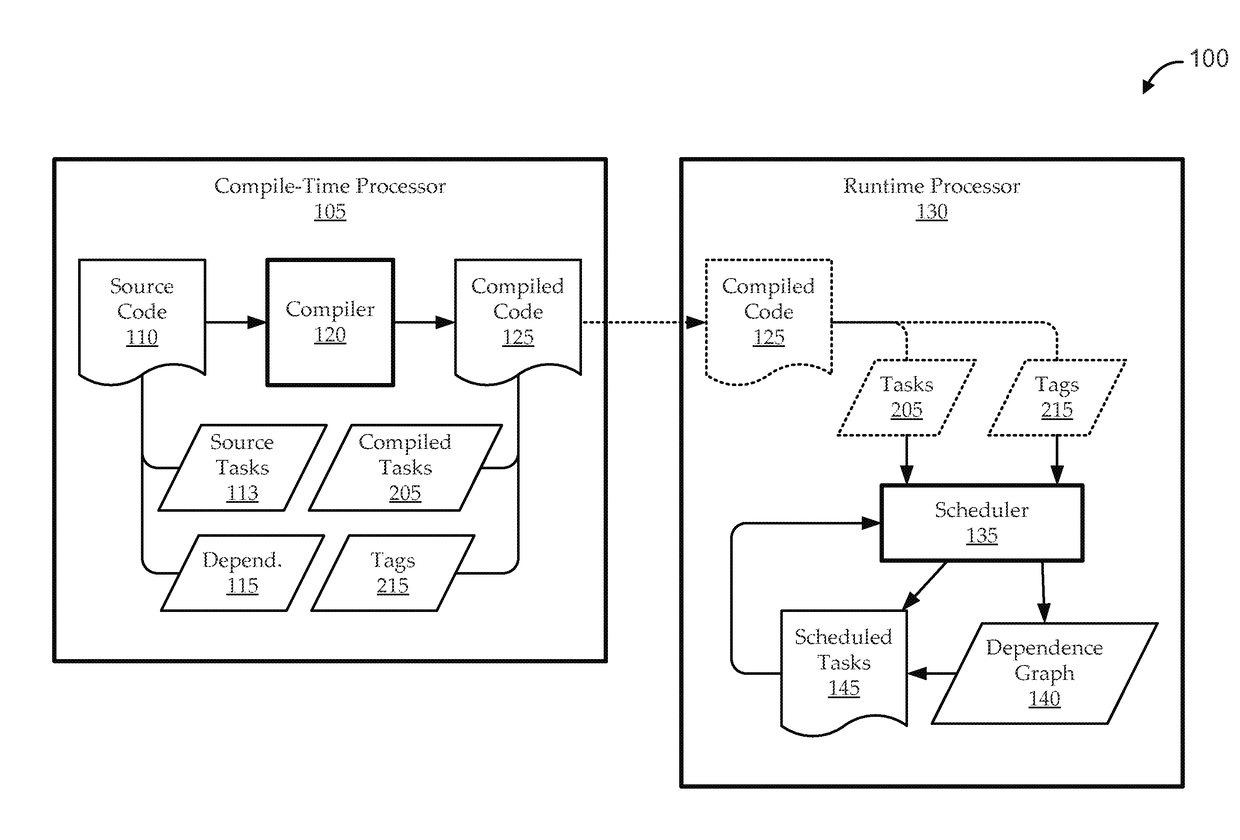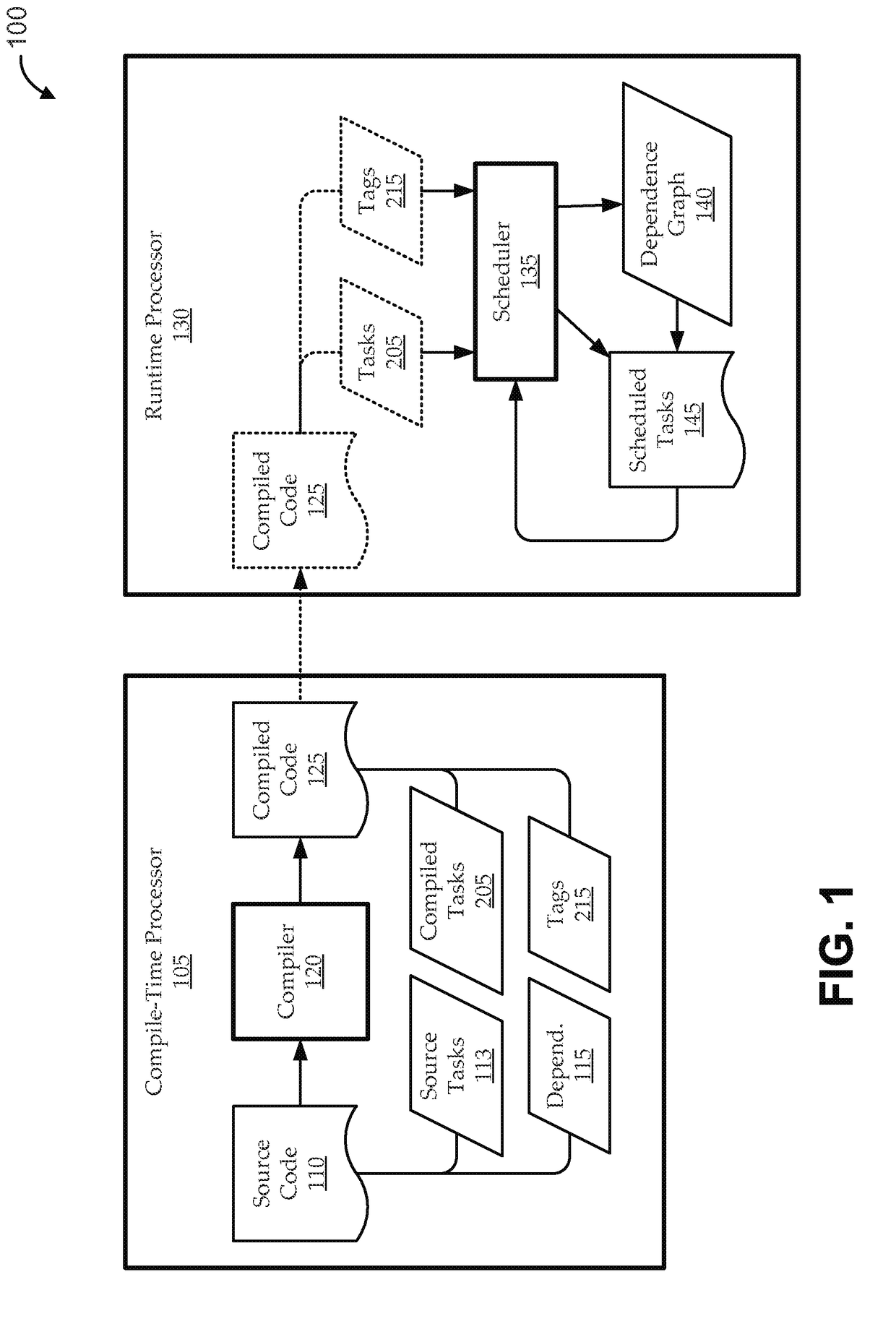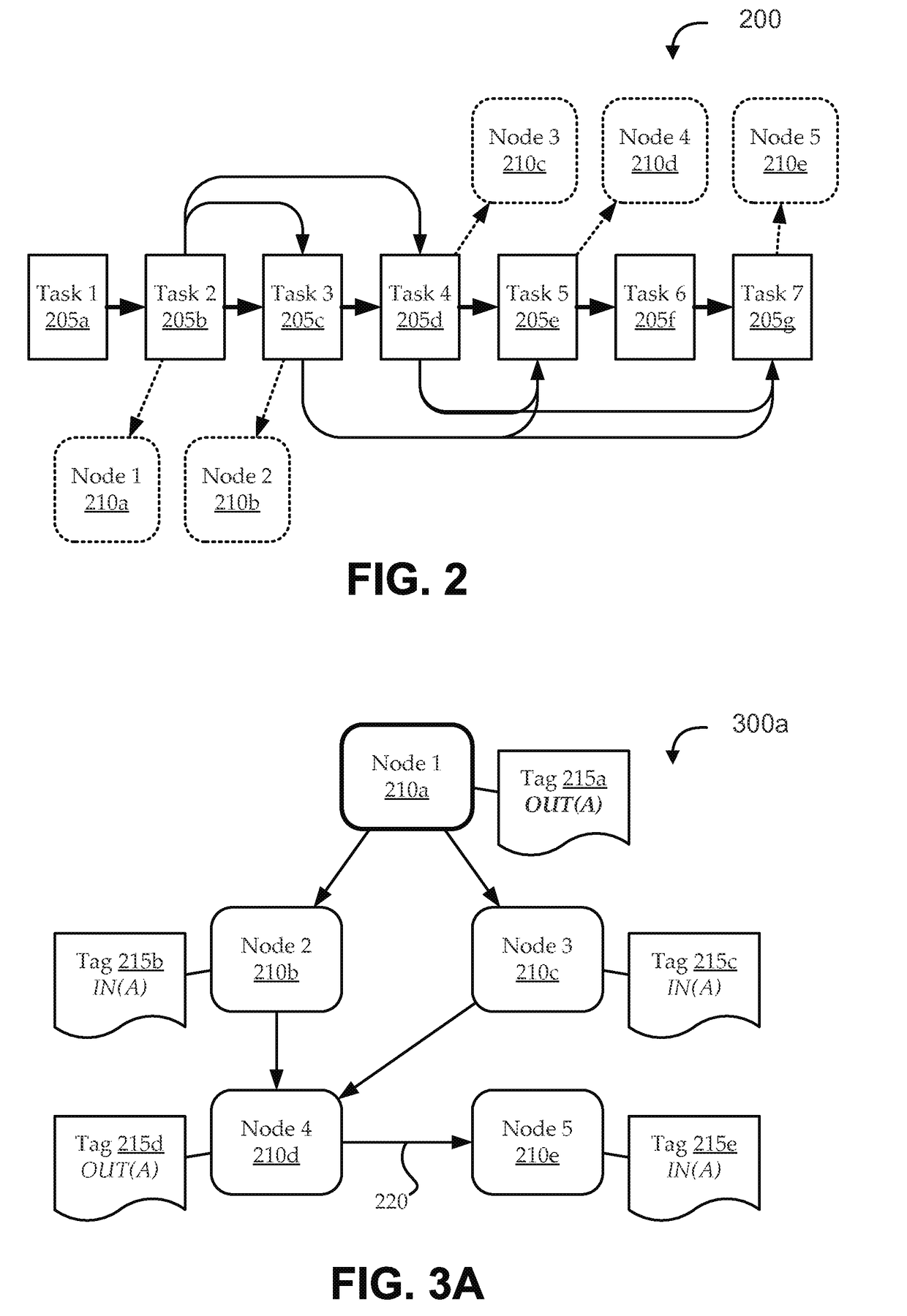Runtime handling of task dependencies using dependence graphs
- Summary
- Abstract
- Description
- Claims
- Application Information
AI Technical Summary
Benefits of technology
Problems solved by technology
Method used
Image
Examples
Embodiment Construction
[0018]In the following description, numerous specific details are set forth to provide a thorough understanding of the present invention. However, one having ordinary skill in the art should recognize that the invention may be practiced without these specific details. In some instances, circuits, structures, and techniques have not been shown in detail to avoid obscuring the present invention.
[0019]Turning to FIG. 1, an illustrative code processing environment 100 is shown having a compile-time processor 105 and a runtime processor 130, according to various embodiments. In one embodiment, the compile-time processor 105 and the runtime processor 130 can be part of a single computational environment (e.g., a single computer). In other embodiments, the compile-time processor 105 and the runtime processor 130 are implemented by different computational environments in one or more locations, at one or more times, etc. For example, an application can be compiled by the compile-time process...
PUM
 Login to View More
Login to View More Abstract
Description
Claims
Application Information
 Login to View More
Login to View More - R&D
- Intellectual Property
- Life Sciences
- Materials
- Tech Scout
- Unparalleled Data Quality
- Higher Quality Content
- 60% Fewer Hallucinations
Browse by: Latest US Patents, China's latest patents, Technical Efficacy Thesaurus, Application Domain, Technology Topic, Popular Technical Reports.
© 2025 PatSnap. All rights reserved.Legal|Privacy policy|Modern Slavery Act Transparency Statement|Sitemap|About US| Contact US: help@patsnap.com



